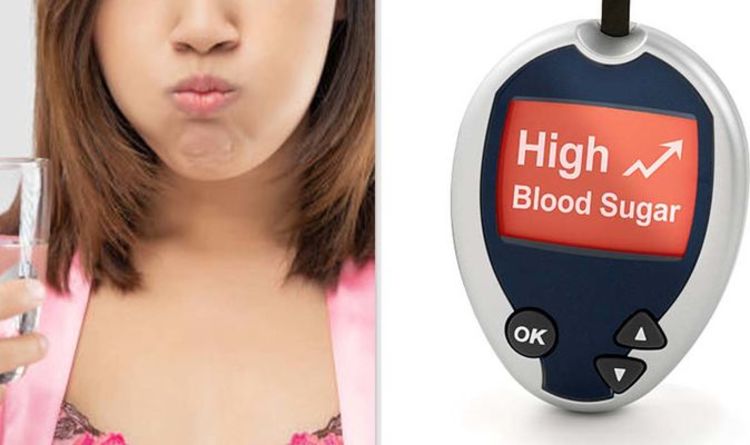Type 2 diabetes can be a 'devastating diagnosis' says expert
We use your sign-up to provide content in ways you’ve consented to and to improve our understanding of you. This may include adverts from us and 3rd parties based on our understanding. You can unsubscribe at any time. More info
If you experience hyperglycaemia regularly, you should speak to your doctor or diabetes care team, according to the NHS. It can affect people with type 1 diabetes and type 2 diabetes, as well as pregnant women with gestational diabetes.
In people with diabetes, hyperglycaemia can be triggered by things like stress, being ill, not getting enough exercise or eating too much.
The NHS notes: “Hyperglycaemia should not be confused with hypoglycaemia, which is when a person’s blood sugar level drops too low.”
The NHS notes that if you have diabetes, “no matter how careful you are, you’re likely to experience hyperglycaemia” at some point.
It adds: “Occasional mild episodes are not usually a cause for concern and can be treated quite easily or may return to normal on their own.
READ MORE: Robin Williams: The ‘killer’ disease the star never knew he had – symptoms

Hyperglycaemia can be potentially dangerous if blood sugar levels become very high or stay high for long periods.
Your blood sugar levels, also known as blood glucose levels, are a measurement that show how much glucose you have in your blood.
The Mayo Clinic says that if your blood sugar level is too high, you may experience several symptoms around your mouth.
Indeed, you may find that you have a fruity breath odour or a very dry mouth.
Symptoms of hyperglycaemia also include needing to pee frequently and bladder infections.
Other symptoms of hyperglycaemia include increased thirst and a dry mouth, tiredness, blurred vision, unintentional weight loss and tummy pain.
Diabetes UK says: “Your blood sugar levels go up and down throughout the day and for people living with diabetes these changes are larger and happen more often than in people who don’t have diabetes.”
The NHS warns: “Symptoms of hyperglycaemia can also be caused by undiagnosed diabetes, so see a GP if this applies to you. You can have a test to check for the condition.”

Diabetes UK says that if you take certain medication, like insulin or sulphonylureas, checking your blood sugars is a “vital part of living with diabetes”.
It adds that routine checks can help you know when you might be starting to go too low, called a hypo, or too high, called a hyper.
The charity adds that more and more people with diabetes are choosing to use a flash glucose monitor to check their sugar levels, which is a sensor you wear on your skin and that you don’t have to prick your finger to use.
Diabetes UK says: “Hyperglycaemia, or a hyper, can happen when your blood glucose (sugar) levels are too high – usually above 7mmol/l before a meal and above 8.5mmol/l two hours after a meal.”
Though it is normal for blood glucose levels to go up and down slightly throughout the day, there are a number of ways you may be able to treat hyperglycaemia.
The NHS says you may be advised to change your diet, drink plenty of sugar-free fluids, exercise more often or if you use insulin, adjust your dose.
“Until your blood sugar level is back under control, watch out for additional symptoms that could be a sign of a more serious condition,” it adds.
You can speak with your GP if you have concerns about high blood sugar.
Source: Read Full Article
